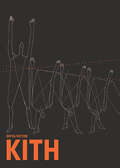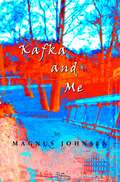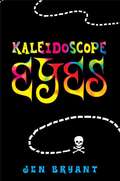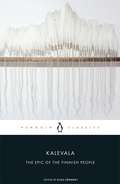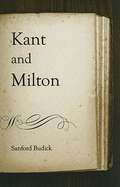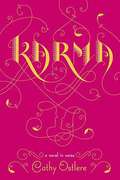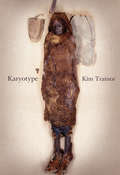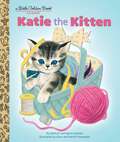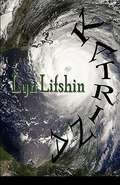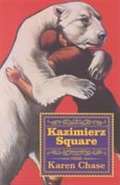- Table View
- List View
Juvenilia
by Ken ChenKen Chen is the 2009 winner of the annual Yale Younger Poets competition. These poems of maturation chronicle the poet's relationship with his immigrant family and his unknowing attempt to recapture the unity of youth through comically doomed love affairs that evaporate before they start. Hungrily eclectic, the wry and emotionally piercing poems in this collection steal the forms of the shooting script, blues song, novel, memoir, essay, logical disputation, aphorism--even classical Chinese poetry in translation. But as contest judge Louise Glück notes in her foreword, "The miracle of this book is the degree to which Ken Chen manages to be both exhilaratingly modern (anti-catharsis, anti-epiphany) while at the same time never losing his attachment to voice, and the implicit claims of voice: these are poems of intense feeling. . . . Like only the best poets, Ken Chen makes with his voice a new category. "
KITH
by Divya Victorkith [noun] one's friends, acquaintances, neighbours, or relations.In Kith, award-winning writer Divya Victor engages Indian-American diasporic culture in the twentieth century, via an autobiographical account that explores what 'kith' might mean outside of the national boundaries of those people belonging to the Indian and South East Asian diasporas.Through an engagement with the effects of globalization on identity formation, cultural and linguistic exchange, and demographic difference, Kith explores questions about race and ethnic difference: How do 'brownness' and 'blackness' emerge as traded commodities in the transactions of globalization? What are the symptoms of belonging? How and why does 'kith' diverge from 'kin,' and what are the affects and politics of this divergence? Historically-placed and well-researched, Kith is an unflinching and simultaneous account of both systemic and interpersonal forms of violence and wounding in the world today.
Kabir
by Robert BlyOriginally published in 1976, with more than 75,000 copies in print, this collection of poems by fifteenth-century ecstatic poet Kabir is full of fun and full of thought. Columbia University professor of religion John Stratton Hawley has contributed an introduction that makes clear Kabir's immense importance to the contemporary reader and praises Bly's intuitive translations.By making every reader consider anew their religious thinking, the poems of Kabir seem as relevant today as when they were first written.From the Trade Paperback edition.
Kafka and Me: Poems, stories and short stories
by Magnus JohnsenThis book refers to a set of poems, free verses, reflections and short stories, which, out of passion, necessity, and madness, I write every day of my life. Like all life, mine also goes through a valley of tears, and I am not a fool to not accept it, ergo, most of what is put here has that dramatic, sad and “why not” reflective bias of always being in catharsis. I have always believed that in sadness, loneliness, pain, loss, much or all of the creativity of the human being hides, even to make people laugh. Here you will find the works divided into three segments, or chapters: One, that of life itself or "In this valley of tears", then some written in joyous and euphoric moments or "Not everything is bad", and finally those written in prose or "Stories, and maybe a story.” Within the verses, you will see my reflections, the result of observation and sometimes, of living it firsthand, if you like it, pass it on so that it serves as a reactive against so many tragic situations that occur in the world, right now, tomorrow, and always. There are also some curious things, and others that refer to the same theme, and therefore you will see repeated names followed by a number. In this book too, there is the germ of a crime novel (very Scandinavian), which will be available shortly. See if you can find out what it is. Although my way of writing is in verses or short stories, as in what I paint, draw, and design, I always seek to convey what I feel, what I think, what I experience, good and bad, and my ideas. We all have principles, as well as a single end for sure, and I believe that the facts are what always give us away, for better or for worse. In what I write, and I believe, I will never lie. Like everyone, I already lie enough living every day, even when I confirm that I feel good, when most of the time it is not. Good luck in your life, and luck in your things.
Kahin Nahin Vahin (Nowhere But There)
by Vijay Munshi Ashok VajpeyiNowhere But There: English translation by Vijay Munshi of Ashok Vajpeyi's Sahitya Akademi award-winning Hindi poetry collection Kahin Nahin Vahin. Sahitya Akademi, New Delhi (2004)
Kahlil Gibran's Little Book of Secrets
by Kahlil Gibran Neil Douglas-KlotzOne of the most popular and profound inspirational writers of all time explores the mysteries of life. Here is bite-sized wisdom for daily living in a beautiful gift package.This book is a collection of Gibran's words on life's big questions and the mysteries of the spiritual path. It is an exploration of the riddles and conundrums that are part of the fabric of existence, and it is an attempt to penetrate and explain the mysteries of life.Gibran was fascinated by life's puzzles and riddles--those questions that cause us to stop what we are doing and ask, "Why?" Here are his musings about the seemingly unanswerable questions and his exploration of good and evil, love and hate, and the difference between appearances and reality.Kahlil Gibran's Little Book of Secrets is organized into five sections that elucidate the key issues and questions that each of us face:1.Entering the Labyrinth of Life2.Secrets of Life and Death3.Life's Ups and Downs4.Secrets of Good and Evil5.Traveling the Inner PathThis inspirational gift volume gently guides readers through life's big issues: meaning and mortality, good and evil, and discovering an authentic spiritual path. Suitable for all gift-giving occasions, it is a book that delights, informs, and inspires.
Kahlil Gibran's Little Book of Wisdom
by Kahlil GibranOne of the most popular and profound inspirational writers of all time shares simple wisdom for living a happy and fulfilling life.This book is a collection of Gibran's words on how to live. Here are his thoughts on what it means to live in community and solitude and what gives life meaning, along with his often prescient views on government, organized religion, wealth, and commerce. Gibran's sensibility feels contemporary. He did not recognize any ultimate authority outside of the human soul:"It were wiser to speak less of God, whom we cannot understand and more of each other, whom we may understand."This is the essential Gibran, with 88 selections organized into 5 sections that elucidate answers to the questions that each of us face:1.Living a Wise Life2.Community Wisdom3.Wise Exchange4.Wisdom from Solitude5.Wisdom Beyond WordsThis inspirational gift volume gently guides readers through life's big issues: meaning and mortality, good and evil, and discovering an authentic spiritual path. Suitable for all gift-giving occasions, it is a book that delights, informs, and inspires.
Kalanni Nidra Ponivvanu (I Will Not Let Time Sleep)
by N. Gopi J. BhagyalakshmiWork of N. Gopi translated by J. Bhagyalakshmi. Award winning collection of Telugu poems.
Kaleidoscope Eyes
by Jennifer BryantIn 1968, while the Vietnam War rages, thirteen-year-old Lyza inherits a project from her deceased grandfather, who was using his knowledge of maps and the geography of Lyza's New Jersey hometown to locate the lost treasure of Captain Kidd.
Kalevala: The Epic of the Finnish People
by Elias Lönnrot'One of the great mythic poems of Europe' The New York TimesSharing its title with the poetic name for Finland - 'the land of heroes' - Kalevala is the soaring epic poem of its people, a work rich in magic and myth which tells the story of a nation through the ages from the dawn of creation. Sung by rural Finns since prehistoric times, and formally compiled by Elias Lönnrot in the nineteenth century, it is a landmark of Finnish culture and played a vital role in galvanizing its national identity in the decades leading to independence. Its themes, however, reach beyond borders and search the heart of human existence.Translated with an Introduction by Eino Friberg
Kalyana Mittata: Beautiful Friendship Poems
by Basil FernandoFernando may not write a lot, but his poems are moving and powerful. This collection includes: The Anonymous People, The Tortoise and the Philosopher, Gems and Intrigue, Sweet Are the Blessings, and more. "Resurrection Today I talked to a man Who had escaped A death camp. Resurrection? No, He is dying now. Growing thin Looking dazed and haggard Having nightmares Mentally not all there. Typical signs Of those who undergo Such experiences," says the psychiatrist. Is there any typical sign To know what His torturers go through? Sweet dreams, nice children Great hopes? I could have helped This man to escape The dreaded camp. I am powerless now, To prevent his slow death."
Kamayani
by Jayshankar PrasadKamayani looks at the Chayawaadi school of Hindi poetry. It plays continuously with the human emotions and takes metaphors from mythologies. The chapters even are named after the emotions. The plot is based on the Vedic story where Manu, the man surviving after the deluge (Pralaya), is emotionless (Bhavanasunya). Anyone having interest in Hindi poetry must read it.
Kamban
by S. MaharajanThe characteristic reach of the Poet Kamban for cosmic personification in his poetry clearly ties these high and abstract matters to very human detail. It is the world of human experience he deals with, and it is through the exaltation of poetic song that he achieves what all the world's great poetry attempts to achieve--a marriage of the divine and timeless with the earthly and experiential.
Kandar Anubuthi, Kandar Alangaram,Vel/Mayil/Seval Viruttham and Tiruvakuppu of Arunagiri Nathar
by Arunagiri NatharKandar Anubhuthi: In this composition of 51 verses the poet, in his inimitable style of ‘sandham’(Tune), worships Lord Murugan for protection and salvation. Kandar Alangaram: Arunagirinathar offers his favourite deity God Murugan not a garland of flowers (poomalai), but a garland of songs (paamalai) in 107 verses. It describes the different manifestations of Muruga in each temple and how He showers mercy on the devotees. Vel –Mayil-Seval Virutham: Vel is a sharp Weapon adorning the hand of God Murugan, Mayil (Peacock) is His Vehicle (Vahana) and Seval (Rooster) is His Flag. Virutham is the tempo of the lyrics. Arunagirinathar glorifies the three- Vel, Mayil and Seval, each in six viruthams.Vel is a symbol of intellect, Mayil represents splendor and majesty and Seval wakes up people from darkness to dawn.
Kant and Milton
by Sanford BudickThis book brings to bear new evidence and long-neglected materials to show the importance of Kant's encounter with Milton's poetry to the formation of Kant's moral and aesthetic thought.
Kapilar Akaval
by KapiladevarAkaval ia a poetic form. In this poem Kapilar narrates the mortality of life and emphasizes all are equal by birth and no one is superior by birth alone.
Kareem Between
by Shifa Saltagi Safadi**WINNER of the NATIONAL BOOK AWARD for Young People's Literature**This heartfelt coming-of-age novel in verse tells the powerful story of a seventh-grade Syrian American boy and his struggles, big and small, as he navigates middle school."The exact type of book I would've loved, and needed, as a kid." — Jasmine Warga, New York Times bestselling author of and Newbery Honor recipient for Other Words for HomeSeventh grade begins, and Kareem&’s already fumbled it. His best friend moved away, he messed up his tryout for the football team, and because of his heritage, he was voluntold to show the new kid—a Syrian refugee with a thick and embarrassing accent—around school. Just when Kareem thinks his middle school life has imploded, the hotshot QB promises to get Kareem another tryout for the squad. There&’s a catch: to secure that chance, Kareem must do something he knows is wrong.Then, like a surprise blitz, Kareem&’s mom returns to Syria to help her family but can&’t make it back home. If Kareem could throw a penalty flag on the fouls of his school and home life, it would be for unnecessary roughness.Kareem is stuck between. Between countries. Between friends, between football, between parents—and between right and wrong. It&’s up to him to step up, find his confidence, and navigate the beauty and hope found somewhere in the middle.
Karma
by Cathy OstlereIt is 1984, and fifteen-year-old Maya is on her way to India with her father. She carries with her the ashes of her mother, who has recently committed suicide, and arrives in Delhi on the eve of Prime Minister Indira Gandhi's assassination - one of the bloodiest riots in the country's history. <P><P>Then Maya is separated from her father and must rely upon the help of a mysterious, kindhearted boy, Sandeep, to safely reunite them. But as her love for Sandeep begins to blossom, Maya will have to face the truth about her painful adolescence . . . if she's ever to imagine her future. <P><P>In this gorgeous, haunting portrait of love, loss, and growing up, Cathy Ostlere - in masterful strokes of verse - has created a simply unforgettable read.
Karyotype
by Kim TrainorAt the heart of Karyotype is the Beauty of Loulan, a woman who lived four thousand years ago, her body preserved in the cool, dry sands of the Taklamakan Desert. Karyotype’s poems range from the title sequence, which explores the DNA and woven textiles of this woman and her vanished people (a karyotype is the characteristic chromosome complement of a species), to the firebombing of the National Library of Sarajevo, from an abecedarian hymn on the International Red Cross “Book of Belongings” to the experience of watching the televised invasion of Iraq in the dark of a Montreal night. The Beauty of Loulan becomes a symbol of the ephemerality of human genetic and cultural texts, and of our chances for survival.
Kashmiri Lyrics
by Neerja Mattoo J. L. KaulAmin Kamil (1924-) is a major voice in poetry of the Kashmiri language. Revised & edited by Neerja Mattoo, translated by J. L. Kaul.
Katie the Kitten (Little Golden Book)
by Kathryn Jackson Byron JacksonBack in print after more than 60 years, a heartwarming tale for today's kitten-loving kids—from the author of the iconic Little Golden Books Tawny Scrawny Lion and The Saggy Baggy Elephant!First published in 1949—and now finally back in print—this charming story about a kitten beginning to make her way around the house will become a family favorite. Breathtaking artwork by Alice and Martin Provensen, who also illustrated The Color Kittens, has been lovingly restored for this edition.
Katrina
by Lyn LifshinAs August 2010, the fifth anniversary of Hurricane Katrina, approaches, Lifshin's volume of straightforward, exact poetry reflects a sense of loss, grief, and compassion.
Kavya Pradeep Class 11
by Suryanarayan RanshubheThis is collection of hindi poems from 1910 to 2010 for students of class eleven of Maharastra education board.
Kazimierz Square
by Karen ChasePainting and photography are things Karen Chase does well; so are fishing and cooking. I never met anyone quite so vividly and rewardingly at home with putting together a meal.

